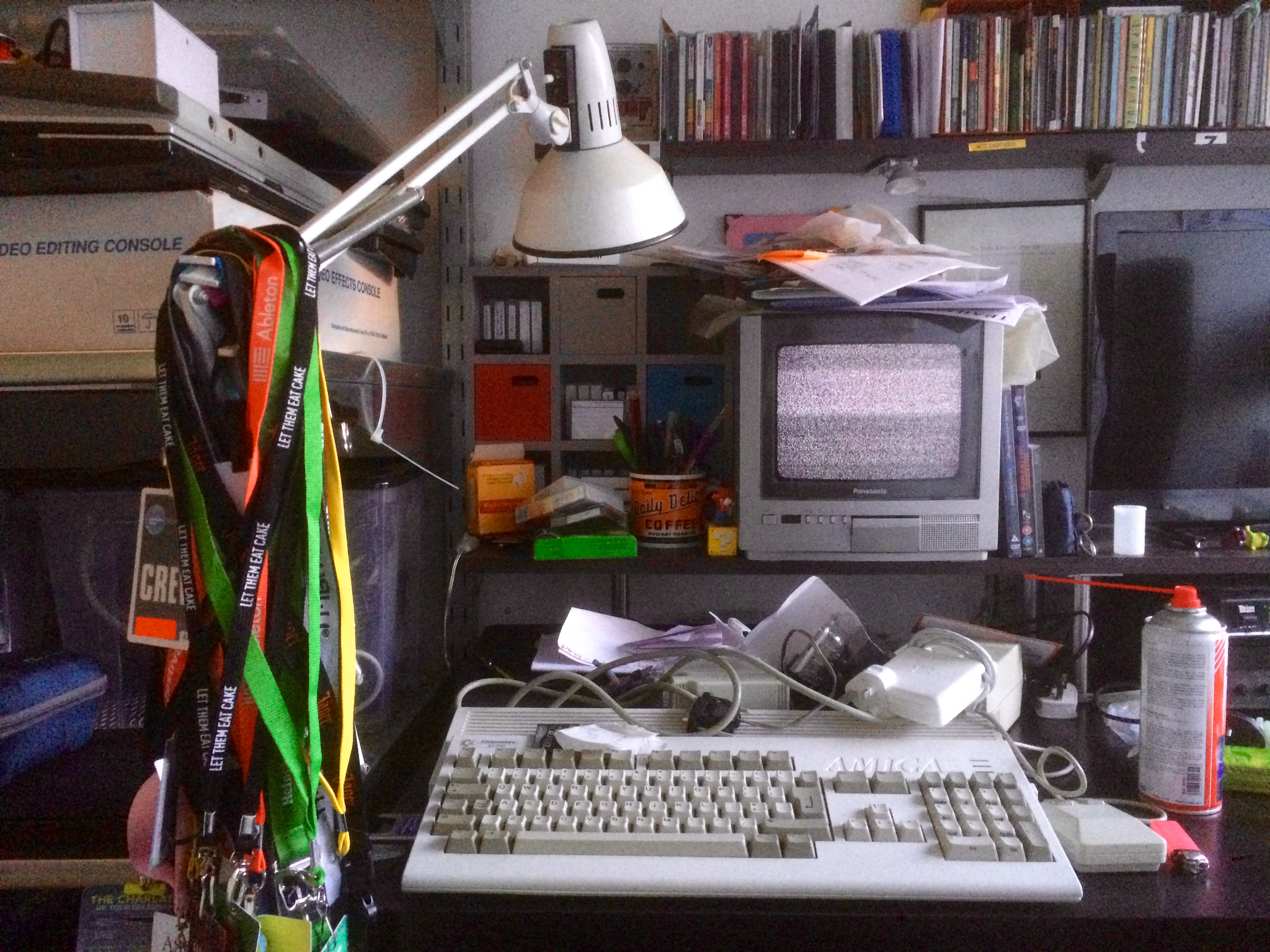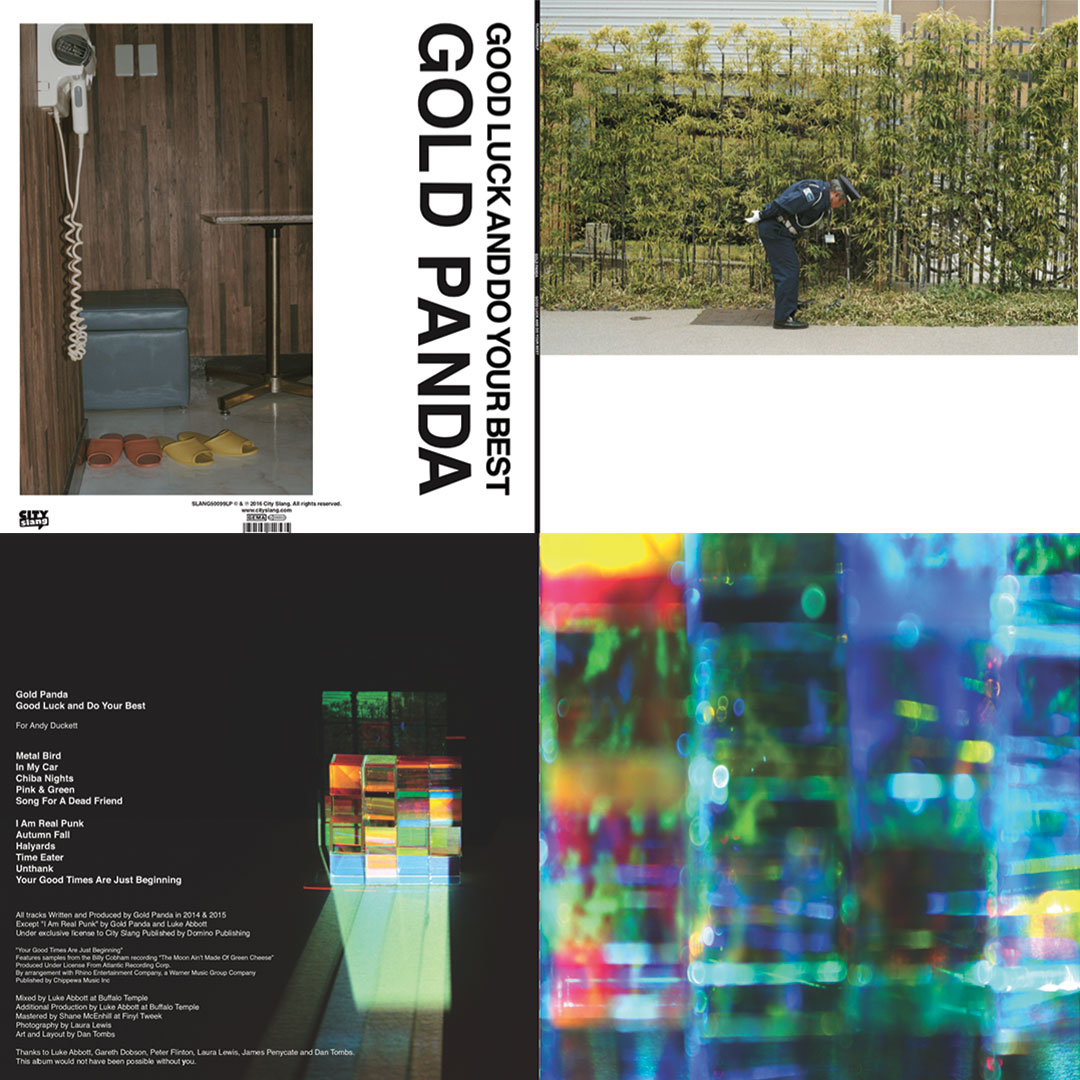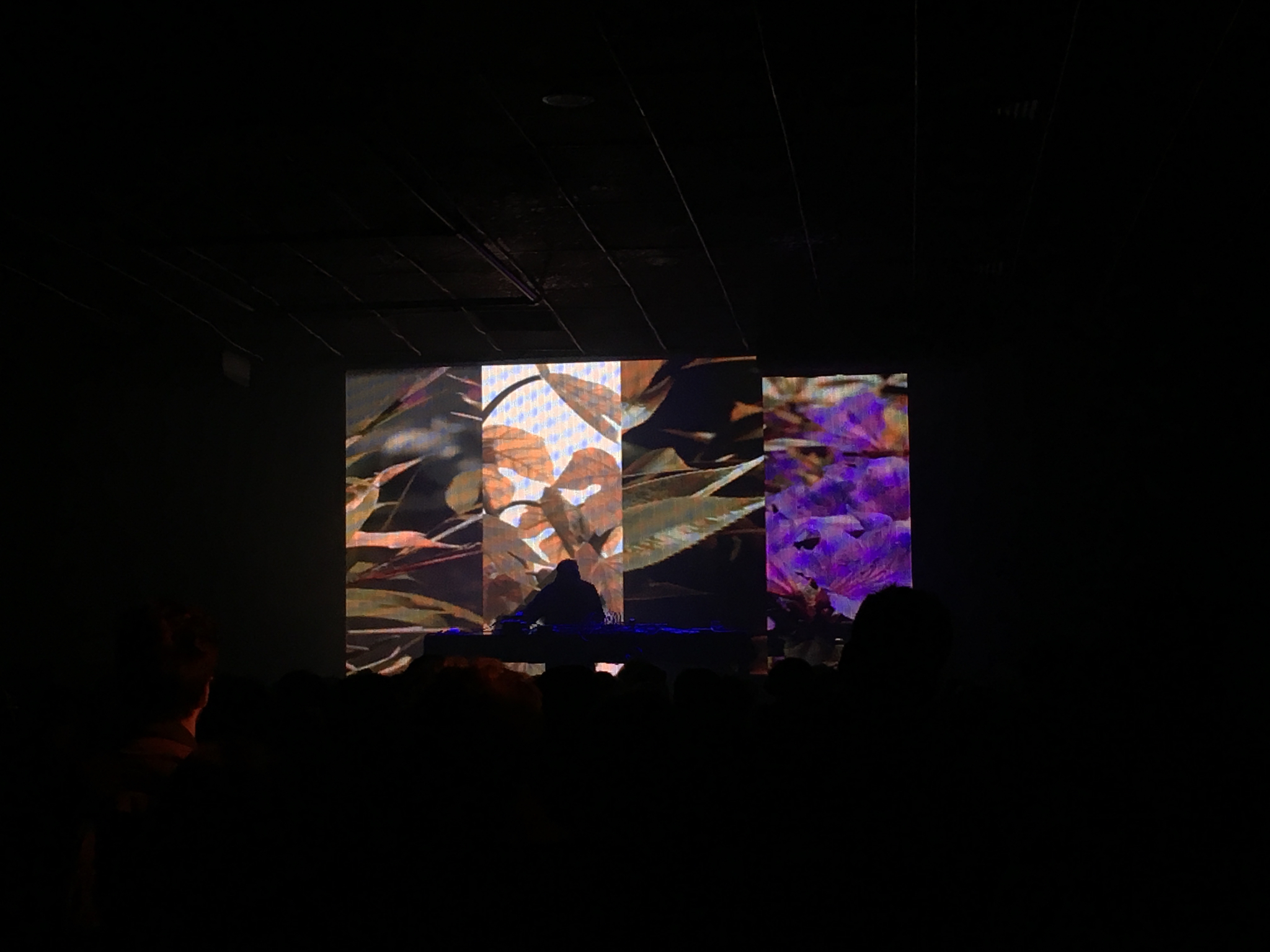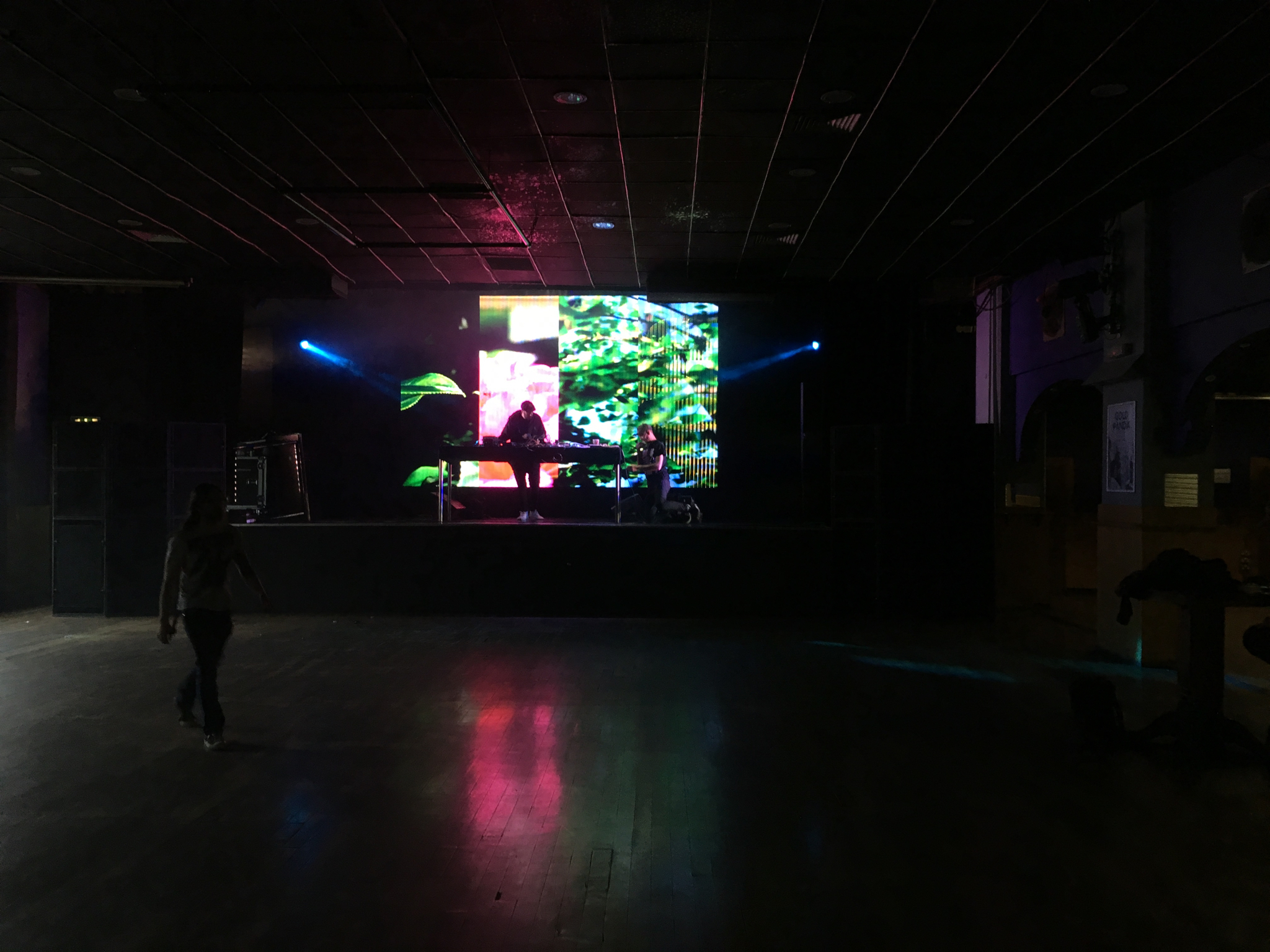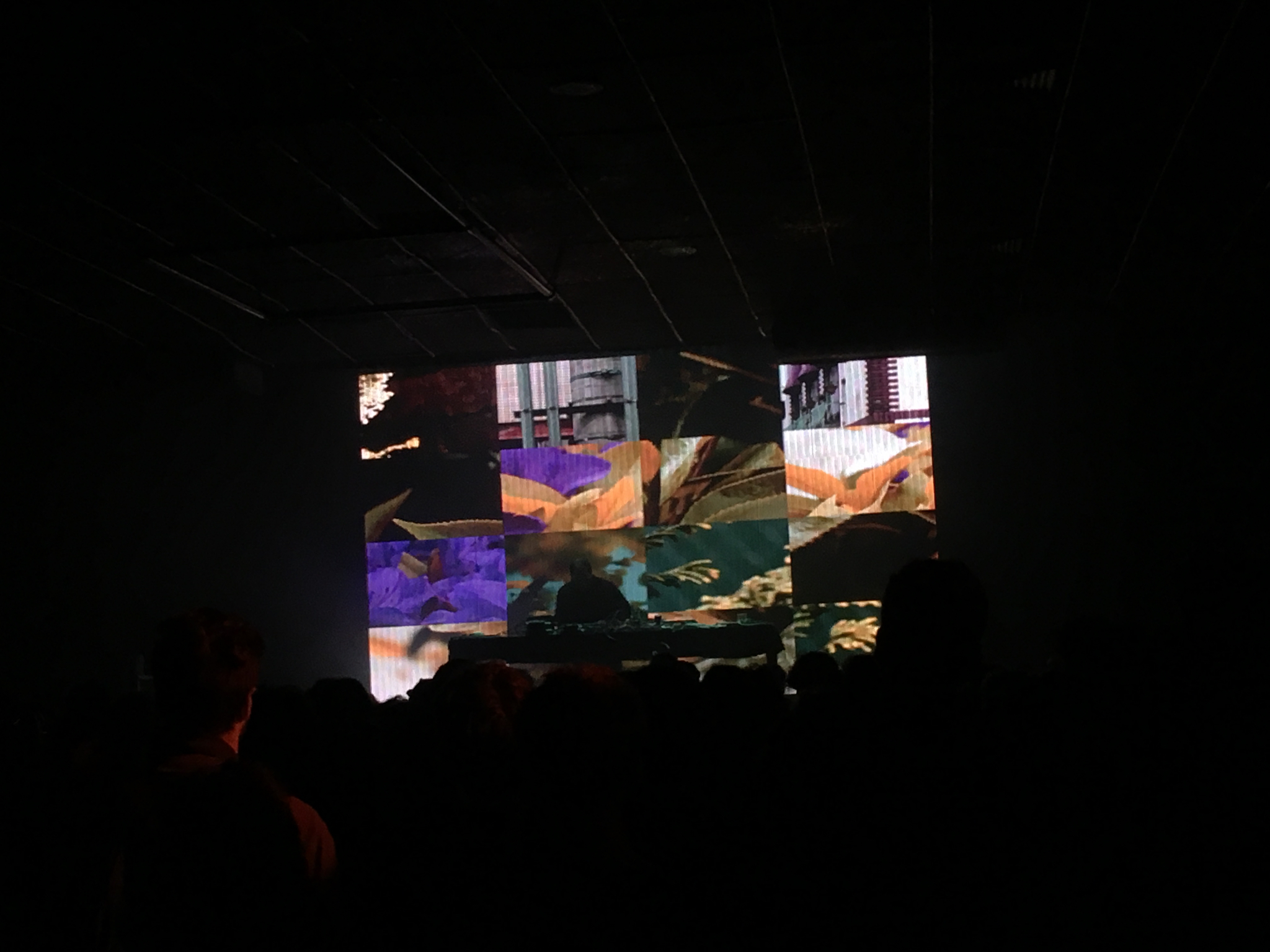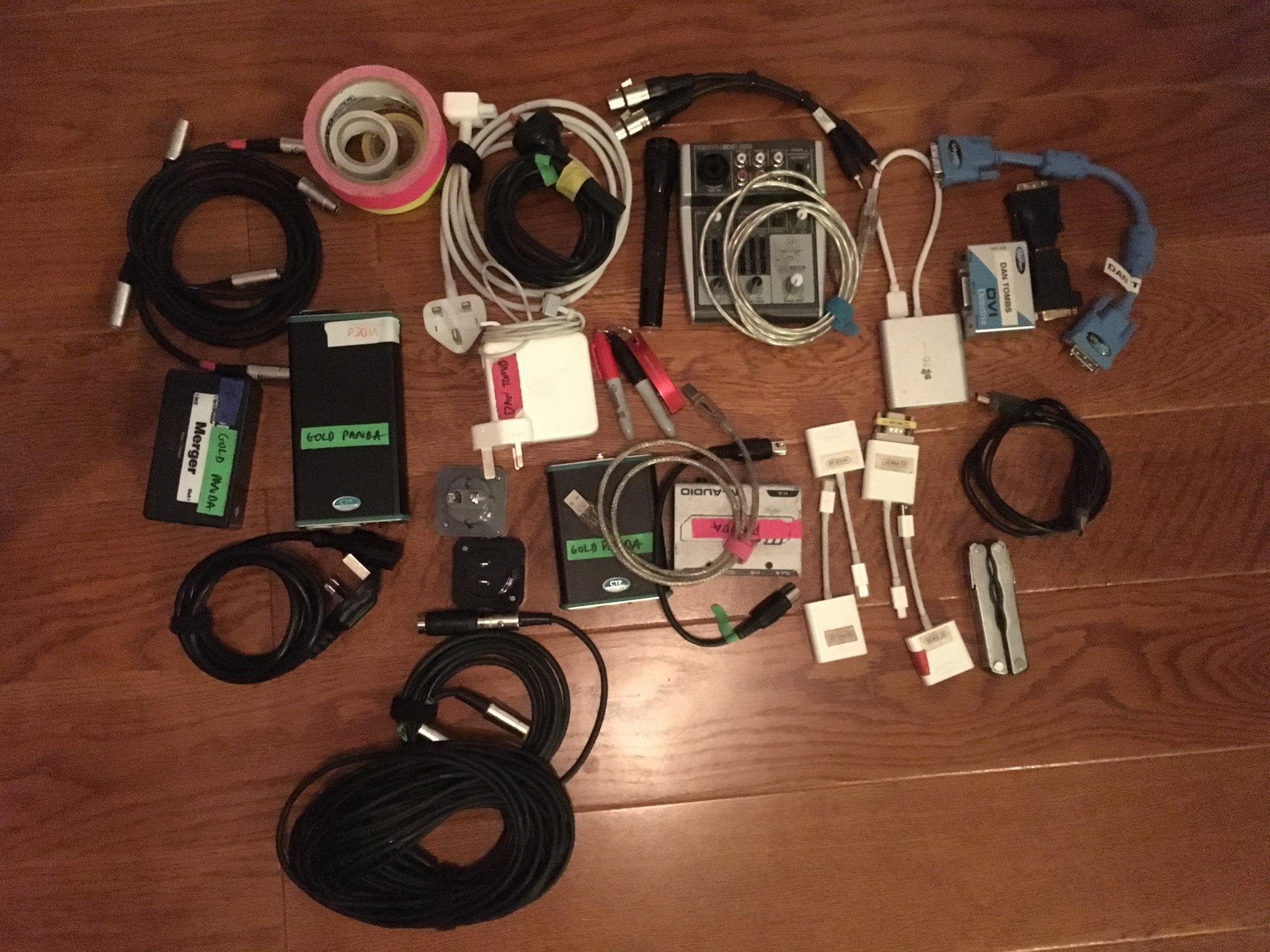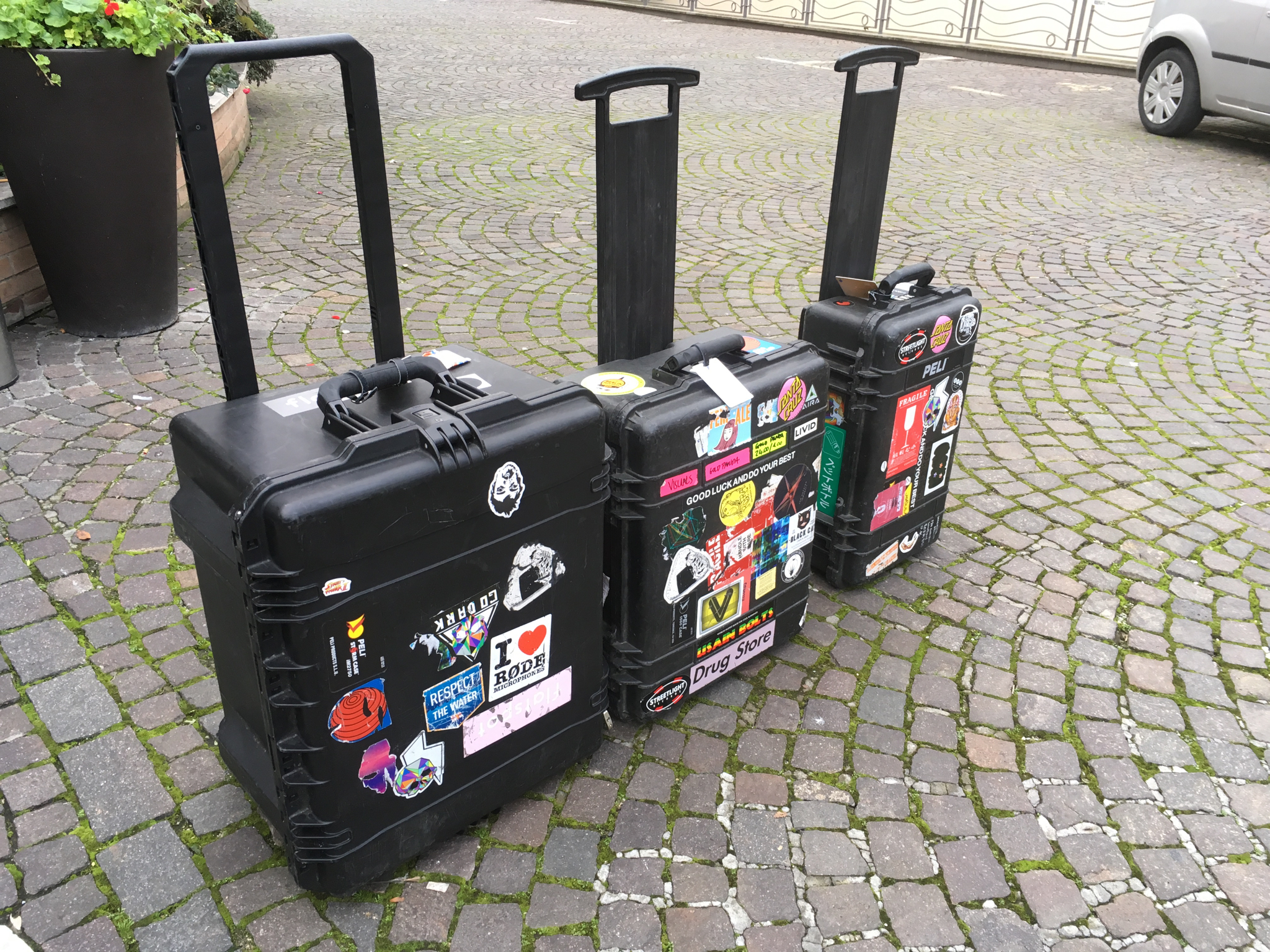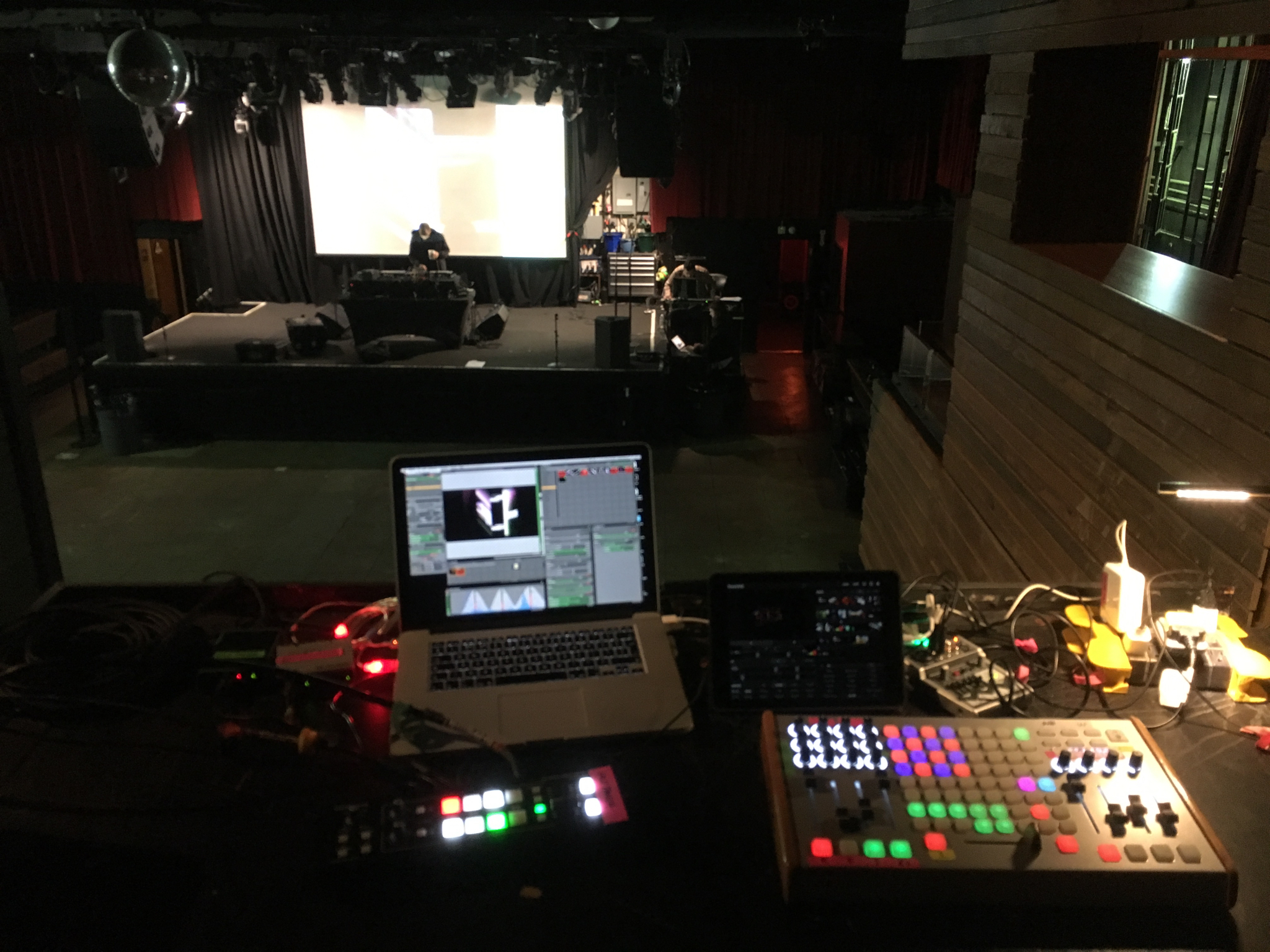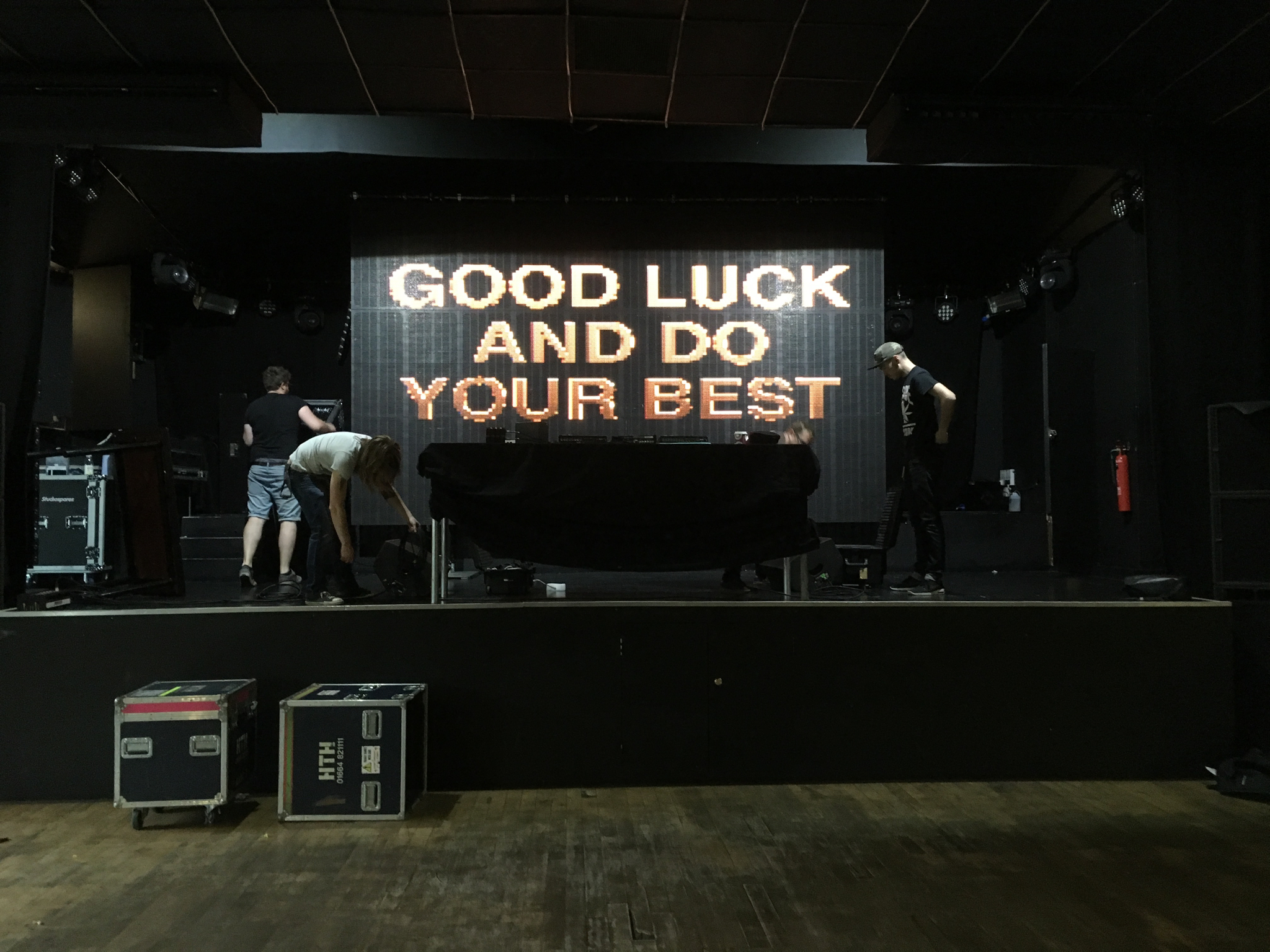This week we are amazingly lucky to have Dan Tombs who has in his time as a visual artist worked with more musicians and bands than I have fingers and then some. One of the things that we love about his setups are the usage of analog equipment as part of the setup and we've asked him to fill us in on everything from how he got started with video, what gear he's collected over the years and all about his most recent collaboration with Gold Panda.
Who are you and what do you do?
Visual set up for James Holden tour 2016 includes VDMX, live cameras Livid Ohm, LZX Industries visual cortex and 3TrinsRGB+1c.
I’ve been working with live visuals for about fifteen years, and a long time user of VIDVOX software, first of all using GRID, then GRID Pro and eventually graduating to VDMX. My background is in Fine Art and I studied at Norwich School or Art and Design in the UK graduating from the painting course, after graduation I continued my interest in circuit bending, obsolete technology and using hybrid digital and analogue video synthesis systems.
These interests led me to work with electronic musicians such as Luke Abbott, Jon Hopkins, Blanck Mass, James Holden, Factory Floor and Gold Panda, designing and performing live visuals for them at their shows I’ve also worked with the Hot 8 Brass Band from New Orleans and The Charlatans.
What hardware and software do you use?
I run a MacBook Pro as the centre of my system, often using a Livid Ohm RGB MIDI controller, in addition to VDMX I use some Max MSP patches for data processing as well as Ableton Live for some advanced audio routing. Syphon is also a great tool to work with video between applications and also for recording elements of my work.
I have amassed a lot of analogue video equipment, mixers, colourisers etc, and also have a few dedicated video synthesisers including an LZX eurorack system, Korg Kaoss Pad and the trusty Edirol V4 too. Recently been able to use a new Roland V-1HD HDMI mixer in my live shows and have alternate content on an iPad running TouchViz for iOS which is a very impressive portable option.
How did the Gold Panda tour come about and what was the creative process like?
I’ve known Gold Panda since 2010 when we did a few shows together, I’ve made a couple of videos for him and also designed a suite of visuals for him to support his album ‘Half of Where You Live’ in 2013. However, before recording and finishing his latest album ‘Good Luck and Do Your Best’ we started talking about the design of the album and the live show. He’d travelled to Japan with the Photographer Laura Lewis and taken lots of wonderful pictures that would become the album sleeve, which I created the typography, layout and made a set of images that became the inner sleeve and featured on single releases for the album too.
I’ve always been impressed that Gold Panda’s live show is very true to his studio practice, working with Akai MPC samplers to make his records, he takes these same samplers out live and uses them to recreate the album tracks live for the audience. I was keen to think of a live show concept that would communicate this to an audience and also reflect Gold Pandas passion for nature, Japan and 16bit video games.
Taking inspiration from the layout of the sample pads on an MPC I designed the visuals based on a 4 x 4 grid creating 16 squares.
I assembled a wide collection of video clips, around 600 clips all created by myself, from trips to Japan with Gold Panda, filming his friends and favourite places, also adventures around Europe and material synthesised by analogue gear, these largely reflect Gold Pandas interests.
The VDMX project is built on 16 layers, each cropped to display in a 16th of the screen and not requiring the video to be pre rendered, so my bank of media can be ever changing and dynamically updated.
I take the MIDI note data from Gold Pandas MPC’s and send the MIDI to the visuals laptop at Front Of House, which means that every time he triggers a sample it sends a MIDI note to VDMX to trigger another random clip in the media Bin and provide a visual representation of the live composition being performed on stage.
I add a few effects to the end result, a little feedback and kaleidoscope effects and sometimes divide the screen into four vertical columns and just take the top notes from the MPC’s to provide some dynamic shift in the 80 minute set, I have this mapped to buttons on the Livid linked to presets on the layer crops and mutes on the layers in VDMX.
When I first built the set, 16 layers of 1920 x 1080 material running all at once, was a serious tax on my machine and really couldn’t run smoothly with all the material encoded as Photo JPEG, I was about to have a rethink about the whole concept but took a risk and moved a lot of the existing media in to the Hap codec, this effected a huge performance gain and it just about ran smoothly 80-90% of the time, the final tweak was to write a MAX MSP patch that ‘cleaned’ the MIDI data coming in, keeping only the note data that had an impact on the visual qualities of the show and preventing too many clips being triggered in quick succession. Big thanks to James Holden for his expert MAX MSP help with this patch too. I derived the clock tempo by using the Waveclock plugin as this saved sending the clock data over MIDI too, the final snag to iron out was to move the channel my Livid operates on so it wasn’t clashing with the MIDI channels on the two MPC’s.
The massaging of the MIDI data wouldn’t have been enough though to get this show running without the Hap codec, it really was key in allowing my to run the show live on a MBP and have some that remains fluid and allows me to improvise and genuinely perform with Gold Panda too.
And of course there some video of the live shows to check out...
To check out more work from Dan visit his website, vidiot.xyz!



